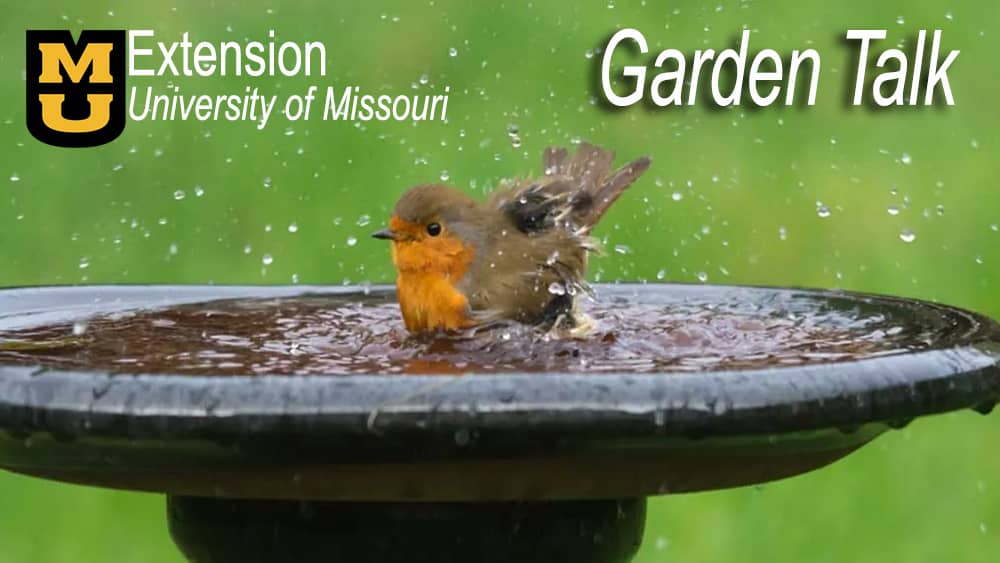
KJFM NEWS – Garden Talk is produced monthly at the Adair County University of Missouri Extension Center in Kirksville, Mo.
By: Sarah Havens, MU Extension Southwest Regional Director
Many of us garden with not only food or aesthetics in mind but also to create habitat or food for the wildlife. Birds are common visitors in our garden and if you want to attract more birds to the garden there are some things we can plant and add to the garden. Birds can benefit a great deal from our gardening efforts and you will likely add some birds to your life list!
When we think about any wildlife enhancements in our landscapes, it is important to think about the needs of the species we wish to attract or benefit. All animals need 3 basic things to live: food, water and shelter. If you know you want to attract birds you should do some research by observing birds or by researching Missouri’s native species. The Cornell Lab of Ornithology has a website called “All About Birds” which can provide valuable information on habitat, food sources and identification of bird species. If you want to attract species that eat insects, then you will want to plant things that attract the insects they eat.
Our birds are usually a combination of migratory and resident. Migratory will spend one part of the year here and are another part in a different area. In some cases, they will stay all summer and in other cases they simply pass through for a few weeks in the spring and fall. Orioles for example will show up in the spring but continue further north. Thinking about their needs can help you make garden choices to provide valuable resources. Some good tips for generally gardening with birds in mind.
- Create layers of plant growth similar to what is found in natural areas. Think about ground covers, shrubs and trees so that you encompass all the layers a bird might utilize.
- Plant plants with nutrition in mind for different seasons. In the spring, birds are rearing chicks and need energy sources such as sweet fruits and insects. Fall migrants coming through utilize fatty fruits such as dogwood berries and sunflower seeds.
- If you add small trees or shrubs, plant in same species groups. Many of our small shrubs are dioecious (have male and female plants) and require at least one of each for pollination for fruit production
- Consider leaving or adding vines. These provide birds with perches, nesting sites and leaf surfaces that insect-eaters use to find food.
- Avoid invasive non-native plants. These species often provide little food value to birds as they do not utilize them. Or in the case of honeysuckle, they will eat the berries which spreads the plant and the bird get little nutrition from it.
- Supply a source of water. Birds will utilize water sources for drinking and for cooling off during the summer months. Make sure to keep your water sources clean as algae and excrement can accumulate, making it less attractive.
- Provide nest boxes. Many species of birds look for safe places such as tree cavities to nest. In suburban and urban areas, large trees and dead trees are hard to find so a nest box will work in their place.
- Leave some leaf litter for the birds. Rake your leaves into piles under hedges or trees and this will provide good foraging ground in the spring for birds. Earthworms and other insects will feed on the decomposing leaves and then in turn be fed on by the birds.